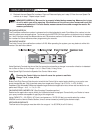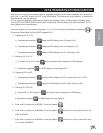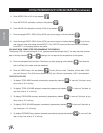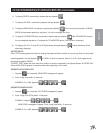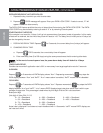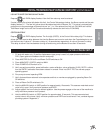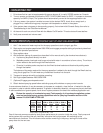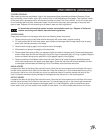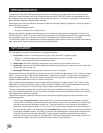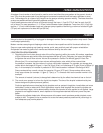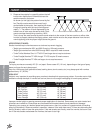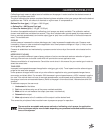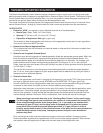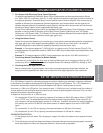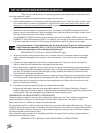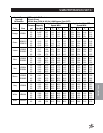
24
SPRAYING INTRODUCTION
This section is intended to offer practical guidelines for the distribution of liquid chemicals over an area of turf
grass such as golf courses, park land, school grounds and lawns. SMITHCO makes no representation as to
the suitability of any technique or product for any particular situation. This section is suitable for self-propelled
spray vehicles or sprayers mounted onto vehicles.
Boom Spraying is the most effective, accurate and efficient method of applying chemicals to large turf areas. It
may be done by means of:
• A dedicated spray vehicle
• A sprayer mounted upon a utility vehicle
Sprayers are typically equipped with wide spray booms. Generally these booms are between 15 feet (4.5 m)
and 20 feet (6 m) in width. They are divided into three sections, with hinges that permit the long outer sections
to automatically move out of the way and reset if an obstacle such as a tree or fence is in you path.
To minimize the chance for missed areas or double application use a device to mark the outside boundaries of
each spray swath. Foam markers and dye markers are advisable.
TURF MANAGEMENT
Turf management chemicals are made for four general purposes:
1. Fungicides: Prevent or cure fungus on turf grass. They are made in 2 general types:
• Systemic - Chemicals enter the plant system and protect or cure it of, fungus.
• Contact - Kills fungus with which it comes into contact.
2. Insecticides: Eliminate damaging insects and worms (such as grubs, beetles, ants, etc.)
3. Herbicides: Control and eliminate undesirable weeds and grass from turf areas and non-turf areas such
as bunkers, trails, fences, etc.
4. Nutrients & Fertilizer: Promote growth, beauty and color in turf grass.
Some materials have to be applied so that they get into the soil below the plant leaves, This is called “soil appli-
cation”. In order to do this, they are best applied with a large volume of water. They are often then watered-in
using the irrigation system. This type of chemical material includes systemic chemicals and chemicals de-
signed to destroy pests which live in the thatch and the soil.
Other materials must be applied to reach a problem that is present on the plant leaves. This is called “Foliar
Application” and requires a lower volume of water. Instead of irrigation water, these materials are further acti-
vated by dry air and sunshine. They include contact fungicide and many herbicides.
The user of sprayers and chemicals must follow the directions provided with the spray material. It is the only
way to insure safe and effective results. It provides information on how much chemical and how much water is
to be applied to the area to be sprayed.
Though there are many types and sizes of nozzles, two specific types have proven most successful in turf
grass management.
• The first type is target-directed. It sprays material in a direct line downwards to the target turf grass.
These are flat fan nozzles, commonly referred to as TeeJet nozzles. They are available in a wide variety
of sizes for any required discharge volume rate. They are the best for many contact or foliar applied
pesticides. They are spaced either 10" (25 m) or 20" (51 cm) apart and overlap one another by about
1
/3.
• The second type useful in turf management are broadcast type nozzles. They are commonly referred to
as raindrop or floodjet nozzles. They spray a hollow-cone shaped pattern of much larger droplets which
fall quickly to the turf under their own weight. They are best for systemic pesticides or any material
requiring a large volume of water for soil application. The larger droplets are not as subject to drift from
wind and are a safer, more environmentally friendly choice in many situations.



